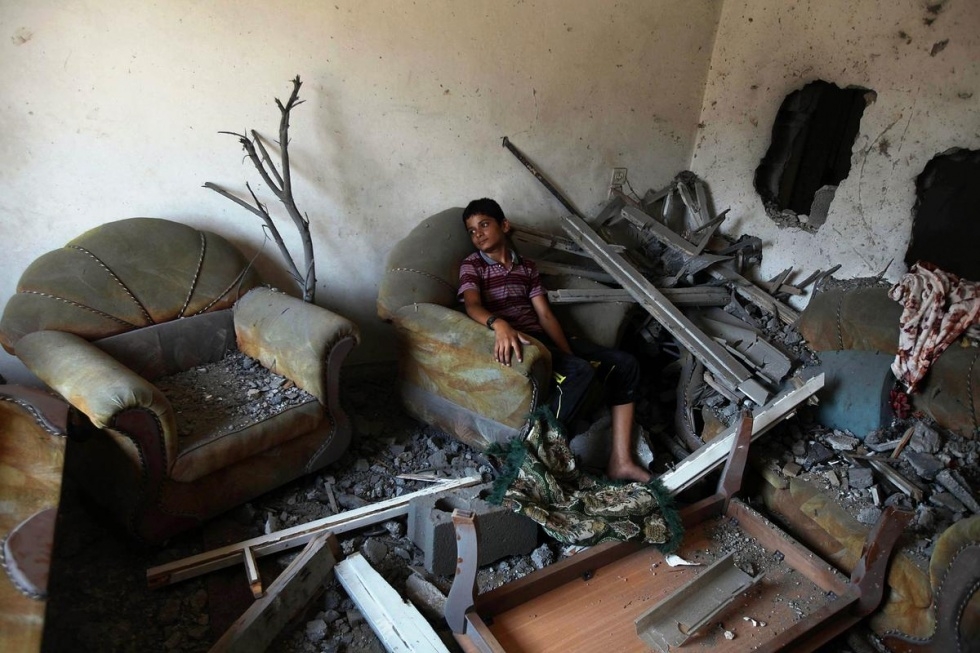Gaza reconstruction: Why the world has it all wrong

International donors gathered in Cairo this weekend to deliberate on a request by the Palestinian Authority for $4 bn in aid to reconstruct Gaza, with the funds going to help the enclave rebuild after Israel destroyed it during this summer’s Operation Protective Edge.
Israel killed more than 2,100 Palestinians, including 500 children during its invasion. Its bombs destroyed 18,000 homes and left 100,000 homeless in the strip.
The bitter, supreme irony is that the ancestors of most of Gaza’s current population fled Israel during the 1948 Nakba. They were expelled from homes in the Negev and other regions that became Israel. In 2014, the descendants of the first expulsion were turned into refugees once again by Israel.
Yet, so far, Israel has faced no punishment or accountability for what it did - though there is a United Nations Human Rights Council panel convened to investigate.
The impulse to offer humanitarian assistance to Gazans is laudable. Their suffering is profound and a stain on the world which allowed it to happen. Gaza deserves to be rebuilt and the needs are urgent.
Nevertheless, I remain profoundly skeptical of the entire reconstruction process including the donor conference. There are no provisions that would guarantee that during the next Israeli invasion of Gaza that the Israeli Army wouldn’t once again pulverise it and send the population fleeing into the streets. There have been three invasions of Gaza since 2008. In each successive one the violence and destruction have escalated.
Although it’s hard to imagine how Israel could cause more damage and suffering than it did this summer, undoubtedly it will next time. And given the past history, the next war isn’t far off. What donor state seeking to ensure its investment will be used wisely would care to see buildings it built be turned to dust in another 12 or 18 months? This reservation has already been clearly voiced at the conference with multiple donors stressing the need for a lasting solution.
This is why rebuilding Gaza should take place in the context of an overall resolution of issues that are outstanding between the parties. Israel and Egypt must end their siege and the borders must be demilitarised, under international supervision if necessary.
Instead of ceasefires broken at the convenience of either side, there must be a permanent cessation of hostilities from both Israel and Gaza. Gaza and the West Bank must also be allowed to pursue their own political future without outside interference.
The proper way to structure such a humanitarian rebuilding process would be to place conditions on both the Palestinians and Israelis. Those restrictions are already in place for the Palestinians. Hamas will not control the reconstruction process. Materials will enter Gaza through Egypt, which also will monitor them. This should ensure that reconstruction aid will not be devoted to rebuilding tunnels or purchasing weapons.
Currently, there are no conditions upon Israel. This is the fatal weakness. The world must declare that if Israel invades Gaza and repeats its past behavior there, the country will face severe penalties. These would include economic, financial and military sanctions. Military and foreign aid would be suspended by the US and EU nations.
This may not prevent Israel from pursuing its usual destructive policies, but it would offer much more disincentive than any currently in place.
This summer, we saw a world powerless to do anything to restrain Israel. Even putative ally, the US was roundly dismissed as a mediator by the hawkish Likud government. History has proven that only two things motivate Israel in such circumstances - pain or ostracism.
After past similar conferences, donor nations often failed to pay up on their pledges. I fear that without real enforcement mechanisms in place, the skeptical impulse this time around will be even stronger. Those who pledge, may pledge less, and those pledges may be even less likely to be fulfilled.
We have already seen this happen. Within hours of the latest donor conference, the US pledged $212 mn to help rebuild the Strip, down from $900 mn in 2009 after Operation Cast Lead. With the conference plagued by so many inherent contradictions, it is likely many others will follow Washington’s lead.
- Richard Silverstein writes the Tikun Olam blog, devoted to exposing the excesses of the Israeli national security state. His work has appeared in Haaretz, the Forward, the Seattle Times and the Los Angeles Times. He contributed to the essay collection devoted to the 2006 Lebanon war, A Time to Speak Out (Verso) and has another essay in the upcoming collection, Israel and Palestine: Alternate Perspectives on Statehood (Rowman & Littlefield).
The views expressed in this article belong to the author and do not necessarily reflect the editorial policy of Middle East Eye.
Photo Credit: A boy sits amidst the rubble in Gaza (AFP)
New MEE newsletter: Jerusalem Dispatch
Sign up to get the latest insights and analysis on Israel-Palestine, alongside Turkey Unpacked and other MEE newsletters
Middle East Eye delivers independent and unrivalled coverage and analysis of the Middle East, North Africa and beyond. To learn more about republishing this content and the associated fees, please fill out this form. More about MEE can be found here.





